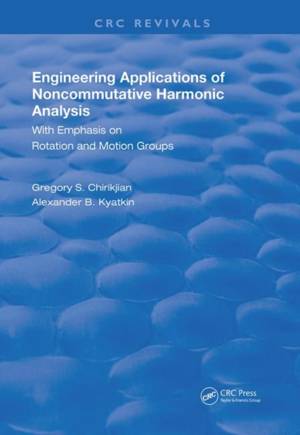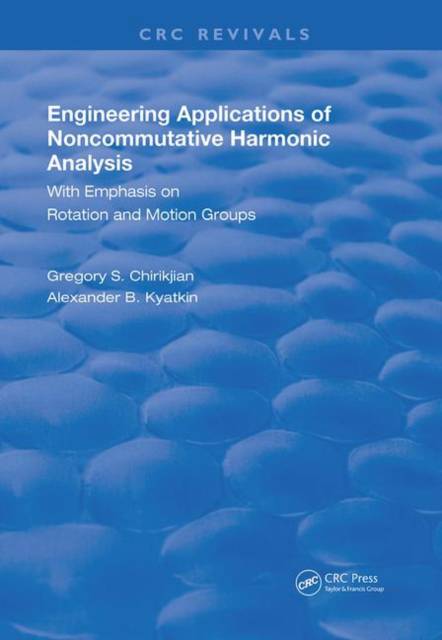
Door een staking bij bpost kan je online bestelling op dit moment iets langer onderweg zijn dan voorzien. Dringend iets nodig? Onze winkels ontvangen jou met open armen!
- Afhalen na 1 uur in een winkel met voorraad
- Gratis thuislevering in België vanaf € 30
- Ruim aanbod met 7 miljoen producten
Door een staking bij bpost kan je online bestelling op dit moment iets langer onderweg zijn dan voorzien. Dringend iets nodig? Onze winkels ontvangen jou met open armen!
- Afhalen na 1 uur in een winkel met voorraad
- Gratis thuislevering in België vanaf € 30
- Ruim aanbod met 7 miljoen producten
Zoeken
Engineering Applications of Noncommutative Harmonic Analysis
With Emphasis on Rotation and Motion Groups
Gregory S Chirikjian, Alexander B Kyatkin
€ 236,95
+ 473 punten
Uitvoering
Omschrijving
First published in 2001. The classical Fourier transform is one of the most widely used mathematical tools in engineering. However, few engineers know that extensions of harmonic analysis to functions on groups holds great potential for solving problems in robotics, image analysis, mechanics, and other areas. For those that may be aware of its potential value, there is still no place they can turn to for a clear presentation of the background they need to apply the concept to engineering problems. Engineering Applications of Noncommutative Harmonic Analysis brings this powerful tool to the engineering world. Written specifically for engineers and computer scientists, it offers a practical treatment of harmonic analysis in the context of particular Lie groups (rotation and Euclidean motion). It presents only a limited number of proofs, focusing instead on providing a review of the fundamental mathematical results unknown to most engineers and detailed discussions of specific applications. Advances in pure mathematics can lead to very tangible advances in engineering, but only if they are available and accessible to engineers. Engineering Applications of Noncommutative Harmonic Analysis provides the means for adding this valuable and effective technique to the engineer's toolbox.
Specificaties
Betrokkenen
- Auteur(s):
- Uitgeverij:
Inhoud
- Aantal bladzijden:
- 696
- Taal:
- Engels
- Reeks:
Eigenschappen
- Productcode (EAN):
- 9780367257187
- Verschijningsdatum:
- 7/07/2021
- Uitvoering:
- Hardcover
- Formaat:
- Genaaid
- Afmetingen:
- 178 mm x 254 mm
- Gewicht:
- 1449 g

Alleen bij Standaard Boekhandel
+ 473 punten op je klantenkaart van Standaard Boekhandel
Beoordelingen
We publiceren alleen reviews die voldoen aan de voorwaarden voor reviews. Bekijk onze voorwaarden voor reviews.











